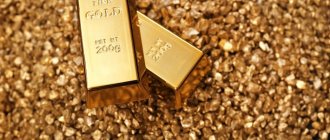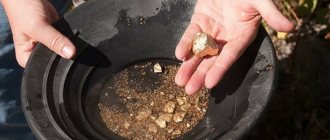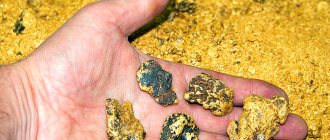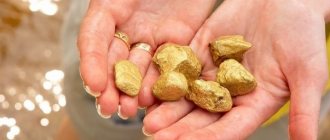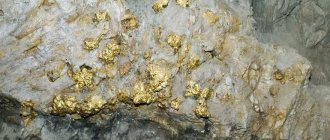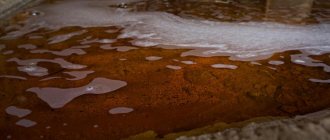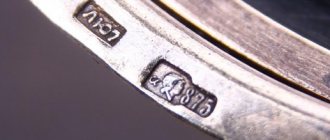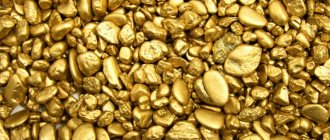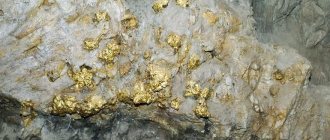Hello dear gold miners and those who are reading this article to keep up to date with the latest developments. Gold is a precious metal recognized as world money. That is why its deposits play an important role in the life of the country. And today we will talk about one famous place for gold mining - Bashkortostan.
From this article you will learn where gold is mined in Bashkiria, in what ways, you will get acquainted with the first major finds in this part of the country and with famous mining companies.
Is there gold in Bashkiria
The answer to this question is a resounding yes. It’s more difficult to figure out how much there is currently in the region. In 2007, the newspaper “Republic of Bashkortostan” published an interview with Vera Makarova, a researcher at the National Museum.
Experts calculated that in 2004, 170 tons of gold were mined in Bashkiria. The republic ranked 13th among gold-mining regions. Vera Makarova cited an interesting fact: out of 53 explored deposits, only 17 are used. All the rest are reserved.
In 2011, the media sharply raised the issue of large-scale gold and diamond mining. The head of the subsoil use department, Rasikh Khamitov, announced that one should not count on these minerals: there are much fewer of them in Bashkiria than in other regions.
Nevertheless, incredible discoveries are still talked about.
Gold deposits in the Urals
If we talk about Russia as a country that annually produces large volumes of gold, then it is immediately worth noting the Urals, which are rich in precious rocks. This is explained by the following factors:
- Moderate climate and absence of permafrost in spring;
- Favorable geographical location;
- Accessible natural resource extraction sites.
The official opening of the gold mines dates back to 1745. But long before that, people found gold nuggets here and actively sold them.
The question arises about where to look for gold, placer or nuggets in the Urals. Nowadays, gold mining occurs throughout the Urals, but Sverdlovsk and Chelyabinsk are especially worth highlighting. It is there that the richest deposits are located, which have not been exhausted to this day. Every year, from 20 to 50 tons of gold are mined in the Urals.
Gold in the Urals is mined in several ways:
- Manual method (when the sand is washed by hand and then sifted in the same way);
- Ore method (when gold rocks are mined in mines);
- Method using dredge;
- Hydraulic method (when all rock masses are washed away by a hydraulic pump).
Since the ore method is most often used, below we will talk about it in a little more detail.
The largest gold mining sites in the Urals.
By the way, the ore method is the most convenient not only in the Urals, but also in other deposits of Russia.
The very first mine in which a large amount of gold was discovered was found in the Urals and had the name Berezovsky. Today, this gold mine has a history of almost three hundred years. It has been explored length and breadth for several tens of kilometers. This entire distance was covered by the treasure hunters on foot.
At the moment, a gold museum is open in Berezovsky.
Russian geologists assign more than 15% of all underground gold reserves to the Urals. In addition, many geological studies show that the reserves are far from all exhausted. They predict that for about another hundred years we will be able to mine gold in the Urals, and at least 20 tons a year.
Of course, now they are exploring much more inaccessible places than before, and where they find some noble, precious rock, as a rule, they also find gold.
Historical reference
The “Gold Rush” began more than 250 years ago after the discovery of alluvial gold in the north of the Uchalinsky region of Bashkiria along the valleys of 7 rivers. The “Golden Belt” had a length of more than 300 km. Prospectors and ordinary residents rushed to search for treasures. A Mining Charter was created, which stated that gold miners must pay a tax of 10% on the total volume of gold mined. Gold mining continued for 93 years.
Expert opinion
Vsevolod Kozlovsky
6 years in jewelry making. Knows everything about samples and can identify a fake in 12 seconds
In 1897, 600 mines and 1,200 adits operated in Bashkiria, which took part in the extraction of precious metal.
Intensive development of gold deposits began before the First World War. In 1912, a mining joint-stock company was created.
First major finds
After the start of the “gold rush”, A.S. was the first to apply. Zhemchuzhnikov. He had 2 groups of mines, one of which discovered gold deposits. In total, Zhemchuzhnikov’s team found 60 tons of gold in Bashkiria.
An ingot weighing about 16-17 kg, which was found in the Uchalinsky district before the revolution, is being actively discussed. According to reliable sources, it was presented to the king.
The next major find occurred in 1992 in the Baymak region of Bashkiria. The nugget weighing 5 kg was called the “Irendyk Bear”.
Hydrogeochemical exploration
Groundwater may also contain subsurface deposits. As groundwater flows through the deposit, small amounts of gold are washed out of the rocks. Sometimes it can be found in parts of groundwater collected from wells.
Over the past few centuries, Bashkiria has been carefully explored by enthusiasts. They searched for precious metals in both the most famous areas and the little-known ones. The results of their activities have never been fully documented.
But incomplete data suggests that only a few of the many thousands who searched this or that part of the deposits ever found valuable resources. Most of the "golden" areas were explored by industry pioneers, many of whom were very experienced in their field. Therefore, gold ore is rare there.
However, the development of new, highly sensitive and relatively inexpensive gold prospecting methods has greatly expanded the possibility of detecting deposits. Now gold extraction is possible in inaccessible places.
They can be quite large. And therefore suitable for the operation of modern mining and metallurgical plants. Geologists and engineers who explore remote Bashkir regions systematically find small placers of gold.
Geographic location and landscape features
The Republic of Bashkortostan is located in Eastern Europe, in the Southern Urals and adjacent territories - the Cis-Urals and a small part of the Trans-Urals.
It borders on the Perm, Chelyabinsk, Orenburg and Sverdlovsk regions, as well as the republics of Tatarstan and Udmurtia. The length from north to south is 550 km, from west to east – 430 km. Area – 147 thousand km2.
Bashkiria is characterized by a variety of natural conditions. It can be roughly divided into 3 zones:
- The Bashkir Ural is a small mountainous area that occupies 1.5/4 of the entire area.
- Bashkir Cis-Urals - 2/3 of the entire area. It is a hilly plain.
- Bashkir Trans-Urals - 1/10 of the entire republic. A small strip that passes into the West Siberian Plain.
Social and economic consequences
Despite the scale of the global gold mining industry, its socio-economic impacts are not well understood. However, many reports present a number of indicators indicating the significant contribution of the gold mining industry to socio-economic development.
In recent years, concerns have been raised about potential links between gold and illegal armed conflicts such as Civil Wars. Although their share in Bashkortostan is low, a responsible mining industry has oversight processes in place to make sure that neither the companies nor the gold they produce contribute to conflict.
The conflict-free gold standard is an agreement developed by the World Gold Council. It is based on internationally accepted criteria and helps mining companies ensure that their gold is not subject to national and international controversy. The standard promotes proper auditing of supply chains and reduces the likelihood of hazards.
Bashkir oil refiners and representatives of industry groups describe the Standard as an important step towards trust and transparency in the gold sector.
Success in finding gold continues to be achieved by those who choose favorable areas. And only after a thorough study of the rocks and geology of the area. Serious prospecting should not be undertaken by anyone who does not have sufficient capital to support a long and possibly unsuccessful gold prospecting campaign.
In Russia, work to discover deposits is being carried out in many regions. And every year the number of successful campaigns increases. This makes it possible to constantly increase the state gold reserve. Ural is one of the leaders in this area. The largest part of precious metals is mined here. And Bashkiria plays an important role in this.
What mineral resources are there in Bashkortostan
In addition to gold, Bashkiria is rich in a variety of natural resources. Let's take a look at what mineral resources are being mined on the territory of the republic:
- peat, coal, natural gas, oil, brown coal;
- raw materials for chemical production - sulfur, barite, limestone, rock salt;
- gypsum, crushed stone;
- minerals - phosphorites, apatites, nitrate, sylvite;
- facing and ornamental stone, raw materials for optics;
- precious stones - smoky quartz, ruby grains, diamonds, jasper, rock crystal;
- carbonate raw materials;
- ores of zinc, copper, manganese, aluminum, iron;
- peat, zeolites, saprofel;
- cadmium, hot shale, lead, bauxite.
Main gold deposits in Bashkiria
On the territory of the republic there are 4 main deposits where gold is mined:
- Baymaksky district is a gold-polymetallic deposit.
- The Sakmaro-Tanalyk site is a vast placer deposit (the bulk of the pure gold mined in Bashkiria occurs in this zone).
- Beloretsk region has the largest concentrations of quartz-gold ores.
- Uchalinsky district is a gold sulfide deposit.
Expert opinion
Vsevolod Kozlovsky
6 years in jewelry making. Knows everything about samples and can identify a fake in 12 seconds
It is important that on February 10, 2022, it published information that geologists who conducted research in the Novopetrovskaya area in search of copper pyrite ores in the Khaibulinsky district discovered deposits interspersed with gold and silver. The gold reserves of the Bashkir gold mining holding are estimated at 87 tons.
At the same time, there are many other areas that are not used by the state, but contain an impressive amount of precious metal placers. Among them: Atangulovskaya, Sultanovskaya, Tanalykskaya placers. At the moment they are being developed, but on a small scale.
conclusions
Gold excavations occur every day all over the world. Entire mines and mines are full of minerals that will help the economy of any country reach a new level or stabilize its position. Detailed studies of the area where they plan to take place will always tell you where to look for gold.
In Russia, gold is mined in many regions. And year after year, gold production increases several times, which allows our country to maintain and increase its gold reserves. Private reserves of gold and precious stones are reaching unprecedented heights.
To the question of where a metal such as gold can be mined in Russia, the most correct answer would be - in the Urals. It is there that the largest part of gold is mined compared to other regions. In addition, as you understood from the article, there are plenty of other places where such a noble metal as gold is mined. As a rule, this is the Asian part of Russia.
By whom and how is it mined?
At the moment, Bashkortostan does not use all known clusters. For some time, the republic even put the deposits up for auction, but no buyers were found.
The reason for this disinterest is unknown.
Let's look at which mines produce and how they do it.
Mining companies
Currently, since 2015, mining has been carried out by:
- Mindyaksky mine;
- Tubinsky mine;
- JSC NPF Bashkir Gold Mining Company;
- 2 prospecting artels (on small placers).
Mindyak Mining and Processing Plant
The Mindyaksky mining and processing plant is no longer functioning. The photo shows the remains of its former grandeur.
It's hard to believe that people once worked here.
Tons of concrete, masonry, metal structures, but the buildings don't seem very durable. Walking here is dangerous.
Extraction methods
Large-scale gold mining is carried out using modern technologies using heap leaching. This method was mastered in Russia for the first time. It consists in the fact that the ore, stacked, is irrigated with a cyanide solution. This method allows you to recycle residual reserves.
For the extraction of alluvial gold, miners' trays and sieves are used - containers that are used for washing the soil.
Mindyak: abandoned mines
A gravel road provides easy access to one of Mindyak's . This gray cube is visible already at the entrance to Mindyak on the left.
You can look into the building:
There are also many abandoned buildings around the mine:
